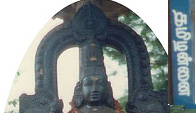
 |
||
| Home Grammar Lessons > Introduction I 1 2 3 4 5 6 II 1 2 3 4 5 6 III 1 2 3 4 5 6 IV 1 2 3 4 5 6 V 1 2 3 4 5 6 VI 1 2 3 4 5 6 Select Unit | ||
|
| |||||||||||||||||||||||||||||||||||||||||||||||||||||||||||||||||||||||||||||||||||||||||||||||||||||||||||||||||||||||||||||||||||||||||||
Sandhi rules and using case suffixes (வேற்றுமை உருபுகள்)When adding case suffixes to nouns, certain nouns undergo sound change. The Sandhi Rules describe which nouns undergo which changes.Sandhi Rules: Insertion of ய் and வ்When a word that ends in a vowel and a suffix that begins in a vowel are added together, a glide - either ய் or வ் - is inserted in between. Selection of either ய் or வ் is determined based upon whether the final vowel is one of the 'front' vowels இ, ஈ, எ, ஏ or ஐ or one of the 'back' vowels அ, ஆ, ஒ, ஓ, உ or ஊ respectively. Front vowels take the glide ய் and back vowels take the glide வ்.
Examples:இ/ஈ ending words
ஐ ending words
உ/ஊ ending words
Only those words with the syllable structure CVCV (consonant-vowel-consonant-vowel) as in தெரு (street), பசு (cow), கொசு (mosquito) take the glide வ் as above. Most of the other words ending in உ like அது (that), பாத்து (song) etc., drop the final உ, when a vowel initial suffix is added as shown below. However, this restriction does not apply to words ending in ஊ, which always take the glide வ். உ ending words other than CVCV structure
ஒ/ஓ ending words
அ/ஆ ending words
Consonant Ending WordsWords with the syllable structure CVC, nouns ending inஅம், டு and று, and first and second person 'oblique' (possessive) forms (such as என், நம் and உன்) undergo a number of different changes when a case suffix is added. Case suffixes in Tamil are listed as below. Case Suffixes (வேற்றுமை உருபுகள்)Tamil case suffixes are attached to the ends of nouns to express grammatical relations (e.g., subject, direct object, etc.) as well as meanings typically expressed in English through pre-positions (e.g., 'in', 'to', 'for', 'from', etc.).
Neither the interrogative suffix ஆ nor the conjunctive suffix உம் nor the
emphative suffix ஏ follows sandhi rules as noted above when added with words
ending either in அம், டு or று or any of the pronoun. Minimal words. Ex. கல், பல், கண், சொல் etc.Any consonant ending noun with a syllable structure CVC where the vowel is short is added with any suffix (both case suffix and others like interrogative suffix, conjunctive suffix etc.), the final consonant is doubled.
அம் ending wordsWhen a case suffix is added with a noun that ends in அம், the final ம் is deleted and an increment த்த் is added. This rule applies only when the suffix is a case suffix, but not for the other suffixes such as ஆ, உம்,ஏ etc. அம் ending words
டு/று ending wordsWhen a case suffix is added with a noun that ends either in டு or று, the final உ is deleted and the consonant (ட் or ற்) is doubled. However, the suffixes such as conjunctive suffix உம், interrogative suffix ஆ and emphatic suffix ஏ are added to these nouns without doubling the final consonant but only the final உ is dropped. டு/று ending words
Add உம் and ஆ 1) மரம் 2) வீடு 3) பல் 4) கல் 5) பால் 6) கால் 7) நான் 8) நீங்கள் 9) நாங்கள் 10) பாட்டு 11) காடு 12) அது 13) இது 14) தெரு add ஐ and இல் 1) மரம் 2) வீடு 3) பல் 4) கல் 5) பால் 6) கால் 7) நான் 8) நீங்கள் 9) நாங்கள் 10) பாட்டு 11) காடு 12) அது 13) இது 14) தெரு | |||||||||||||||||||||||||||||||||||||||||||||||||||||||||||||||||||||||||||||||||||||||||||||||||||||||||||||||||||||||||||||||||||||||||||
|
© South Asia Language Resource Center (SALRC) |